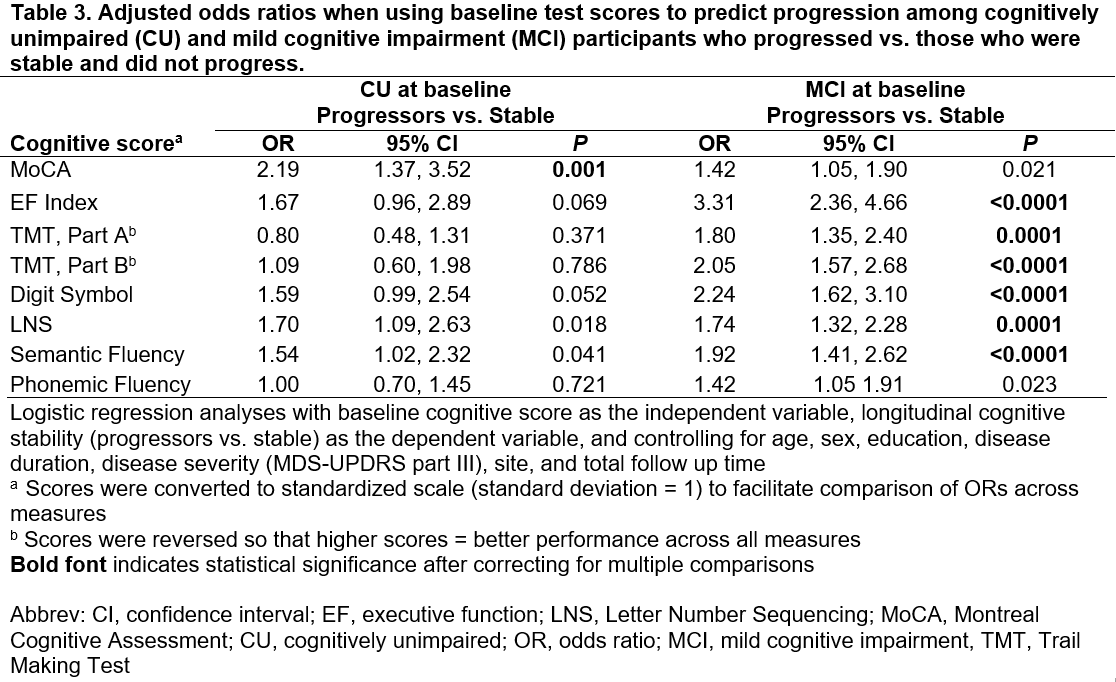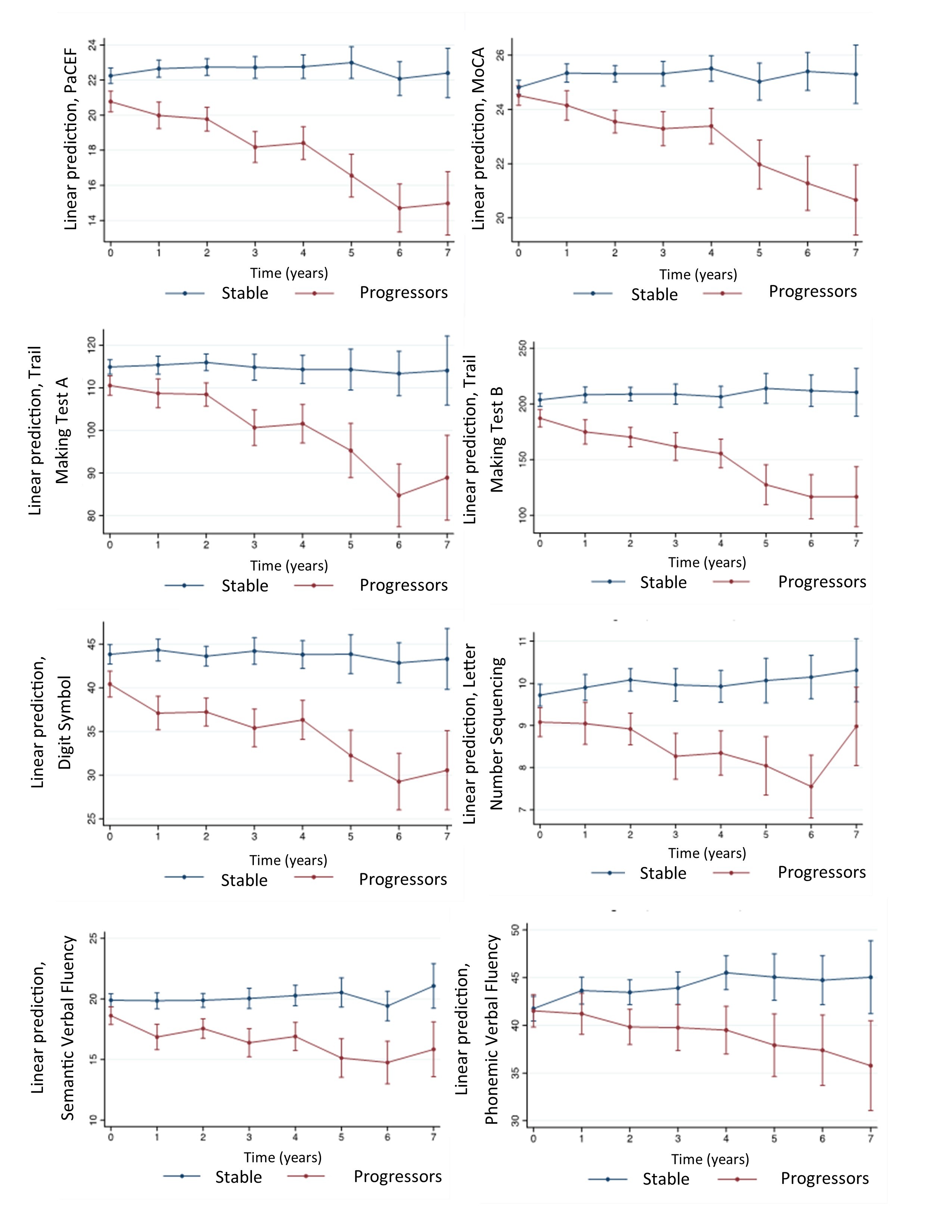Category: Parkinson's Disease: Cognitive functions
Objective: To develop a cognitive composite measure that is sensitive to decline in executive functioning for use in Parkinson’s disease (PD) clinical trials.
Background: The affected cognitive domains and course of cognitive decline are different for PD and Alzheimer’s disease; however, PD clinical trials have measured cognitive decline primarily using composites designed for Alzheimer’s disease. Developing cognitive measures specifically assessing executive functioning is of critical importance given that this domain is often the first to be impaired in PD [1] and up to 80% of PD patients go on to develop dementia [2].
Method: To create the PaCEF, we applied confirmatory factor analysis to baseline neuropsychological data from 841 PD participants enrolled in the Pacific Udall Consortium (Table 1). In 545 PD participants with longitudinal data (Table 2), we used linear mixed models to quantify cognitive decline detected by the PaCEF and MoCA. Logistic regression was used to examine how well the PaCEF and MoCA predicts cognitive progression and time to progression. We calculated the sample sizes required for future clinical trials to detect a 25-50% reduction in slope of cognitive decline over 1 or 2 years using the PaCEF and MoCA.
Results: A one-factor model of executive functioning with excellent fit (Fig 1; CFI=0.993, TLI=0.989, RMSEA=0.044) was used to calculate the PaCEF. The average annual change in PaCEF ranged from virtually no change for cognitively unimpaired (CU) participants who did not progress to over 2 points for mild cognitive impairment (MCI) participants who progressed to dementia (Fig 2). For CU participants, baseline MoCA but not baseline PaCEF was significantly associated with subsequent cognitive progression (Table 3). In contrast, for MCI participants, baseline PaCEF but not baseline MoCA was significantly associated with progression to dementia (Table 3). The PaCEF showed the strongest association with predicting time to dementia. Sample size comparisons demonstrate a clear advantage of using the PaCEF as an endpoint, with a 43% reduction in required sample size in comparison to the MoCA, assuming a 25% or 50% reduction in slopes.
Conclusion: The PaCEF is a sensitive measure of executive function decline in PD that will be especially beneficial for clinical trials focused on PD-MCI patients.
References: 1. Weintraub D, Tröster AI, Marras C, Stebbins G. Initial cognitive changes in Parkinson’s disease. Movement Disorders. 2018;33(4):511–9.
2. Aarsland D, Creese B, Politis M, Chaudhuri KR, Ffytche DH, Weintraub D, et al. Cognitive decline in Parkinson disease. Nat Rev Neurol. 2017 Apr;13(4):217–31.
To cite this abstract in AMA style:
C. Young, B. Cholerton, M. Shahid, C. Abdelnour, C. Zabetian, T. Montine, K. Poston. The Parkinson’s Disease Composite of Executive-Functioning (PaCEF): A measure for detecting cognitive decline for Parkinson’s disease clinical trials [abstract]. Mov Disord. 2023; 38 (suppl 1). https://www.mdsabstracts.org/abstract/the-parkinsons-disease-composite-of-executive-functioning-pacef-a-measure-for-detecting-cognitive-decline-for-parkinsons-disease-clinical-trials/. Accessed December 13, 2025.« Back to 2023 International Congress
MDS Abstracts - https://www.mdsabstracts.org/abstract/the-parkinsons-disease-composite-of-executive-functioning-pacef-a-measure-for-detecting-cognitive-decline-for-parkinsons-disease-clinical-trials/





